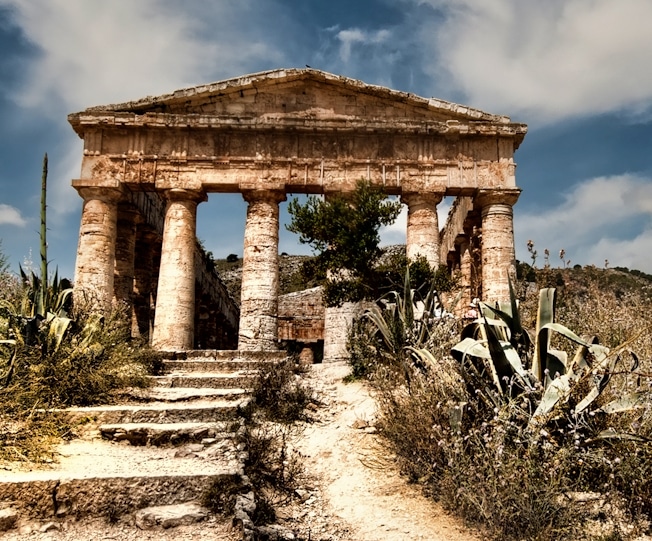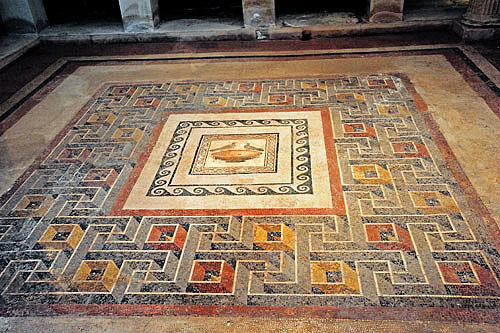

Malta boasts a large number of archaeological sites which set their history apart from that of other Mediterranean destinations.
There are megalithic monuments, Bronze Age dolmens, Punic tombs, remains of Roman Villas and traces of prehistoric man, which defy explanation, such as the mysterious ‘cart tracks’. For three millennia, from around 5200 B.C., the archipelago was home to a unique, temple-building civilisation. Malta and Gozo’s temples are thought to be the oldest free-standing buildings known to man.
One site above all others is special to Malta – the Hypogeum, a labyrinth of underground chambers probably used as both a burial site and a temple. The Islands’ temples qualify as UNESCO World Heritage Sites and are open to the public.
A good place to start your tour is at the National Museum of Archaeology in Valletta or the Hypogeum itself.
Borġ in-Nadur Temples Borġ in-Nadur, Birżebbuġa, Malta These temples ruins are situated in the southern area of Malta and are important because they appear to reveal not only a four-apse temple (c.2000 BC), but also a fortified, Bronze Age domestic settlement.
Clapham Junction Buskett, limits of Ħad-Dingli, Malta The most impressive and dense concentration of these cart ruts are on scrubland south of Buskett Gardens, an area known as Clapham Junction.
Ġgantija Temples Temples Street, Xagħra, Gozo Ġgantija Temples are one of the most important archaeological sites in the world and date from around 3600 to 3200 BC. Due to the gigantic dimensions of the megaliths, locals believed that the temples were the work of giants. .
Ħaġar Qim Triq Ħagar Qim, Qrendi, Malta The temple of Ħaġar Qim (c. 3600 – 3200 BC) stands on a hilltop overlooking the sea and the islet of Filfla. The temple itself consists of a single temple unit, although it is not clear if it was originally constructed as a four or five-apse structure.
Ħal Saflieni Hypogeum Burial Street, Paola, Malta The Hypogeum, or underground cavity, is a unique monument and superb example of architecture in the negative. Excavation has yielded a wealth of archaeological material including pottery, human bones, personal ornaments such as beads and amulets, little carved animals and larger figurines.
Mnajdra Temples Triq Ħaġar Qim, Qrendi, Malta Mnajdra sits tucked in a hollow in the cliffs on Malta’s southern coast. The site is probably the most atmospheric of all of Malta’s temples, as it lies in an isolated position on a rugged stretch of coast overlooking the isle of Filfla.
Skorba Temples Mġarr, Malta Skorba comprises two temple remains and was left untouched during the first two phases of archaeological digs at temple sites in the early 19th and 20th centuries. read more
St. Agatha’s Catacombs St. Agatha Street, Rabat, RBT 2020, Malta According to a strong local tradition, during the persecution of Christians decreed by the Roman Emperor Trajanus Decius (249-251 AD), St. Agatha fled from Sicily and took refuge in Malta.
St. Paul’s Catacombs St. Agatha Street, Rabat, Malta St. Paul’s Catacombs is a typical complex of interconnected, underground Roman cemeteries that were in use up until the 4th century AD. They are located on the outskirts of the old Roman capital Mdina, since Roman law prohibited burials within the city.
Ta` Ħaġrat Temples St. Peter Street, Mġarr, Malta Dating from 3600-3200 BC, the two Ta’ Ħaġrat temples are amongst the earliest temple buildings in Malta and are extremely well preserved.
Tarxien Temples Neolithic Temples Street, Ħal Tarxien, Malta The Tarxien Temples date from 3600-2500 BC and are the most complex of all temple sites in Malta, consisting of four megalithic structures.
Xaghra Stone Circle Triq il-Qaċċa, Xagħra, Gozo The Xagħra Stone Circle is an underground funerary complex, situated in Xaghra on the Maltese island of Gozo. It was first discovered by John Otto Bayer in the 1820s and rediscovered in 1964 after Gozitan researcher Joe Attard Tabone examined a painting by Charles Brochtorff in the National Library.
The small museum of the Domvs Romana is built around the remains of a rich, aristocratic roman town house (domvs) which was accidentally discovered in 1881. Although very little remains from the house itself, the intricate mosaics which survived for centuries as well as the artifacts found within the remains are testimony enough of the original richness and story of this fantastic abode.












